Gunsan was the most important port in the Honam region in the early 1900s. It developed so quickly that it easily rivaled Chemulpo (Incheon), Busan, and Mokpo, becoming a modern international trade center whose ships could reach both China and Japan. As a city mostly propped up by the colonial economic structure, it declined post-liberation.1 After becoming all but abandoned after the Korean War, it became a significant industrial and commercial center again after 1958.2 However, Korea’s industrialization policies of the 1960s and 1970s favored the major urban areas of Seoul, Daegu, and Busan, while Gunsan was assigned a long, slow growth structure.3 As such, it is only in the last two decades or so that the city’s urban landscape has begun to change.
Gunsan has since reestablished itself as an important economic center in conjunction with its neighbors, Iksan and Jeonju, but its growth has resulted in a new, crater-like spatial split. In the 1990s, apartments were built at the outskirts of the old town, yet business and industry stayed concentrated in the old town by the waterfront.4 Surprisingly, much of the early modern architecture in the old town near the waterfront still remains – a fact that was even more true prior to the 1990s. Gunsan has since attempted to capitalize on its remaining tangible history by implementing a ten year restoration plan regarding the downtown-waterfront area that was first developed by the Japanese during the colonial period.5 The city completed the first phase of this revitalization in 2013, which included renovations of the former customs house, Joseon Bank, Miz Trading Company, 18th Bank, and the immediate coastal area that these structures sit on.6 As of 2014, the second phase is currently being carried out, which seems to be based around forming “culture” streets or reforming early modern urban spaces. This ten year plan is to take place from 2009 to 2019,7 and, in my opinion, so far the results have been pretty good.
The Port’s Opening
A mere three years after Korea’s opening to foreign trade (1876), Japan had already discovered that the Gunsan area would be of great commercial importance (though they probably knew this before the 1876 treaty as the Honam region had a reputation). This is made evident by ongoing talks with the Korean government that began in 1879 at the time of Jemulpo’s opening for trade.8 Along with the towns of Masan (southern coast) and Seongjin (North Korea), it is widely thought that Gunsan opened on May 1, 1899. This shows that it took years (since at least 1879) for the Japanese to get development rights in many of Korea’s ports, and that it may not have been as simple a task as some make it out to be.
A newspaper reported on March 1, 1899 that some had already proclaimed Gunsan to be an open port, but the article advised its readers not to make contracts with foreign traders as a foreign settlement had yet to be confirmed.9 Such rumors could have been influenced by an announcement from June of 1898, which was documented by missionary doctor and diplomat Horace Newton Allen, stating that Gunsan would be made an open port in the future.10 However, the New York Times ran an article based on a U.S. State Department report by Allen that indicated Gunsan opened on May 1st, 1899 – the date that is now accepted as the official opening of the port.11 Per the June 1898 announcement documented by Allen, it seems that Gunsan may have been on the verge of becoming an open port for a long time. Confusion regarding the date of Gunsan’s opening can be seen as late as 1919 when a book published by missionary-statesman Arthur Judson Brown indicated that Gunsan was “designated” as an open port in May of 1898.12 Was 1899 misprinted as 1898? Was this a reference to the June 1898 announcement? I’m not sure. The reason these dates are interesting is because it is unclear to me when it was actually legal for foreigners to live or work here. One present day writer even stated that it wasn’t until 1901 that Japanese settlers could “freely” come and go from Gunsan.13 Regardless, the newspaper’s advice to not make contracts with foreigners seems to imply that there was already some kind of foreign presence in Gunsan even before its official opening.
The Foreign Settlement
Eventually dominated by Japanese influence, the foreign concession was initially meant to be jointly controlled.14 Presumably this was meant to be done by the ministers that represented the United States, France, China, Russia, Germany, and of course, Japan, as their names were printed on the general foreign settlement plan when it was drawn up.15 Recognized on October 10, 1899,16 this arrangement may have been intended to keep any one nation from gaining too much influence in the port.
The foreign concession was a 141 acre (0.572 sq km)17 piece of land near the waterfront whose buildings followed a Japanese-Western grid pattern with 92 sub-divided plots.18 Any Korean houses within the settlement area were demolished, and the land was filled in, subdivided, and prepared by the Korean government for auction to foreigners.19 There were about 150 hanok documented around Gunsan’s five or six hills in 1899,20 though it isn’t clear how many sat in what would become the foreign settlement.
Using three different categories, land could be bought in the form of “(a) village, rice-field, or low-lying lots not requiring filling in; (b) hill lots; and (c) foreshore lots requiring further filling in.”21 As in almost every other colonial town, the formation of a foreign settlement created a visible spatial split in Gunsan. The differences in infrastructure and development between the places that foreigners and Koreans lived would also lead to a socio-economic split, a reoccurring theme in colonial Korea. Gunsan only had about 558 residents in 1899,22 but by 1912 it had become home to nearly 10,000 people.23 A newspaper reported 8,161 as Japanese residents in 1910, according to a survey conducted by the Residency-General.24 (Note that this conflicts with information provided by the Korean Statistical Information Service, whose chart shows about 5,000 Japanese in 1910).25 To put this into perspective, by 1944 there were over 57,000 people living in Gunsan.26
Gunsan’s Growth and Modernization
During the first fifteen years of its early modern life, Gunsan went through a number of administrative changes where one system would be established only to be abolished shortly after. This was a result of some local institutions becoming more centralized under the Government-General. For example, the police force became Gunsan Police Station under the Office of the Resident-General in 1907.27 However, the inverse was true for other institutions. The judicial and prison systems, which were previously under the Office of the Resident-General, interestingly turned into independent courthouses and jails in 1909.28 It is then perhaps after Gunsan’s elevation to the status of bu (something like a city district or country subdivision) in 1914 that administrative changes cooled off. These fast changes reflect Gunsan’s quick growth at the time.
As Gunsan’s importance grew in the 1900s, easier ways of transporting goods to the port were sought out. Korea’s first paved road was constructed in 1908 between Jeonju and Gunsan, simply known as the Jeonju-Gunsan Road.29 It somewhat helped in connecting nearby regions with the port, but it was the railway lines that were established in 1912 and 191430 that really helped in creating cheap transportation for rice from the Honam Plains to Gunsan.
It is important to note that the town’s economy was heavily, if not entirely, supported by industries related to rice, including rice-polishing and alcohol brewing.31 There were at least nine registered brewing companies, such as Johwa (renamed Baekhwa post-liberation) and Hyangwon, in 1932.32 Throughout the 1920s and 1930s, Gunsan handled an incredible 19-25% of the entire country’s rice exports,33 with up to 70% of the rice being exported from Gunsan to Osaka (Japan).34 Interestingly, the city’s reliance on rice is why a number of former neighborhood names (Miwon-dong, Miseong-dong, Miryeong-dong, Mijang-dong, Jangmi-dong) contained “Mi”, meaning ‘rice’ in Chinese.35 Regarding the city’s wealth, it should be noted that Gunsan’s annual trade only amounted to 12,079 won in its first year (1899), but by 1934 it had increased over 6000 times, amounting to more than 74 million won.36 To put this into perspective, 100 won during the Japanese occupation is thought to have been worth about 8 million won at current value.37
In the literature I’ve read and museums I’ve walked around in, I find it interesting that none of them mentioned the Oriental Development Company (Dongyang Cheoksik). As far as I can tell, the company didn’t get involved in the Gunsan area, which is in itself interesting. However, the Gunsan Farming Cooperative and nearby banks may have functioned much like the Oriental Development Company, at least in one sense, in that they aided Japanese settlers in buying and reclaiming land around Gunsan.38 That being said, most of the modern banks in general could be said to have assisted in land purchases.
Expansion work was carried out from time to time as Gunsan grew. This included the Gunsan Airbase, established by the Japanese (and later occupied by the U.S.) on nearby reclaimed mud flats in 1923.39 From 1926 on, various port expansions, land reclamation projects, and city developments were introduced.40 The Japanese also had a 1938 expansion plan that included the shoreline opposite of Gunsan’s original harbor.41 This was called Janghang,42 and while I don’t think this colonial expansion of Gunsan was ever fully realized, there may still be some Japanese buildings there. The 2010 Daum Map street views show a number of renovated and crumbling early modern buildings that were clearly the result of Japanese modernization. A 1946 U.S. military map shows a gridded area with a train station there, proving that development had at least started.43 If I ever make it over the bridge to the Janghang area, I’ll try to explore it and update this post by leaving some pictures here.
Lastly, by looking at this 1946 U.S. military map closely, we can see what Gunsan looked like at the very end of the Japanese occupation. A train station, though now long gone, was built on the waterfront. The city consisted of multiple mills, factories, hospitals, schools, and churches. The coastal area also had the Standard Oil Co. and at least one salt refinery. A granary inspection center and grain market sat near the customs house. The outskirts contained another Gunsan Station with railroad employee housing, a stadium-like place named “Public Athletic Ground,” and, even further out, a horse racing track, an isolation hospital, and something that looks like a military installation. Irrigation systems in the area were watered via the Irrigation Association Pumping Station.44
Jangmi-dong (At the waterfront)
In 1905, the port’s first improvements began as the shoreline was reclaimed.45 Land was developed to make space for the future customs site, and shipping facilities, like a pier, were constructed.46 After the establishment of the Society for Harbor Improvement at Gunsan Port in 1911, a second set of improvements brought about the “installation of automatic telephone booths, a railroad extension to Gunsanhang Station, and the construction of three landing piers” (not the piers mentioned below).47 More expansions led to more land reclamation, more port facilities, and more storehouses.
The Yellow Sea, which touches Korea’s west coast, was known for its wide variance in tidal ranges.48 This was an obstacle to shipping, yet it obviously didn’t stop the Japanese from developing a port here. It is unclear how tricky it was to combat the tides before the mid 1920s, but it was apparently difficult enough to merit the construction of some special floating piers which can still be seen on the old waterfront today. Constructed between 1926 and 1938, these floating platforms are unique as they don’t appear anywhere else in Korea. The piers appear to have been made buoyant, matching the tidal levels as the water shifts, allowing for boats to load and unload quickly and easily. During the groundbreaking ceremony for the new port expansion beginning in 1926, it is interesting to note that even then Governor-General, Saito Makoto, attended.49 This should be seen as further evidence of Gunsan’s economic importance to Japan. While it is said that a fourth floating pier was built between 1936 and 1938,50 the previously mentioned 1946 U.S. military map only shows three piers in the inner harbor.51
Just by these piers we can see the old railway tracks that conveniently led right up to the inner harbor.
Next to the tracks is the former Gunsan Branch of the Bank of Joseon. During the Bank of Joseon’s colonial days, the institution itself began its life as the Bank of Korea in 1909. The following year, it became the Bank of Joseon, whose success throughout the Japanese occupation was so great that multiple branches were also established in Japan, Manchuria, and China. In Gunsan, the Bank of Joseon started by first buying out the Gunsan branch of Jeil Bank. It remained here as a local office until its elevation to the level of a true bank branch in 1916.52
The former building of the Gunsan Branch of the Bank of Joseon, which still remains today, was then built in 1922 (pictured below). A Japanese architect named Nakamura Yoshihei is credited as the designer, but it is thought that another man from his design office, an Austrian named Anton Feller, contributed to the design of the bank building. Nakamura came to Korea two years after graduating from the Department of Architecture at Tokyo Imperial University in 1905. Feller graduated from the Zurich Faculty of Architecture in Switzerland and, after serving in the first world war, becoming a prisoner of war, and then escaping during the Russian Revolution, he made it to Seoul and joined Nakamura’s office. Prior to Feller’s arrival, Nakamura’s buildings were done in a “flowery gothic style” that probably mirrored other imperial-looking Renaissance, Neo-Victorian, Neo-Baroque, and Art Nouveau inspired buildings.53 Feller’s influence brought in modernist and secession styles that Nakamura’s office adopted, meaning a lot of their later designs lacked the flourished, decorative designs that they previously used.54
Feller’s influence can then clearly be seen in the former Gunsan Branch of the Bank of Joseon. The modernist secession inspired structure sits in the former port area, massive and imposing. At the time, it would have overlooked the inner harbor (including the floating piers) with a clear view of much of the settlement. Constructed on a strip foundation with two stories and a pointy truss roof, its second level served almost no purpose other than to create an aesthetically grand interior. Much of the underlying structure was completed with brick. The exterior was then finished with granite and, strangely, porcelain tiles.55
The former bank has an interesting history. Post-liberation, the Bank of Joseon became the Bank of Korea again. Interestingly, according to a 1946 U.S. military map, a building at this location was labeled as “Jūhachi Bank.”56 However, there is a building to the west labeled “Chosen Bank,” leading me to wonder whether or not these two banks were mixed up and mislabeled during liberation.57 It seems that sometime before the Korean War, the bank moved to Jeonju. After the war, in November of 1953, Hanil Bank acquired this particular office in Gunsan. A private owner purchased the building in 1981 before it became a wedding hall. By 1984, its function had shifted to that of a night club. A fire broke out at some point after this, leaving the main hall to sit in disuse until its recent restoration. An extension along the exterior of the front entrance in the mid 1990s became a noraebang. This has since been removed, and the former bank building’s restoration involved taking out rusted rebar, replacing rotted wood in the truss, and recreating the imitation stonework around the facade and string courses, presumably with cement.58 It now houses the Gunsan Modern Architecture Exhibition Hall. An old photo of this street with the bank in background can be seen here.
The Gunsan Branch of Japanese No. 18 Bank was established in 1907, but the structure we see today wasn’t built until 1911.59 When compared to the Bank of Joseon, the former Gunsan Branch of Japanese No. 18 Bank is rather plain. It is, in my opinion, a rather generic Western styled bank with rows of windows whose arches are detached near the top. The structure has since been converted into an art gallery and museum. Judging by a museum panel explaining the restoration work done to the former bank, it was originally built with a wooden frame and then cemented over to create the facade. The roof follows a hip design and originally had ceramic tiles covering it. Unfortunately, nothing seems to remain of the original interior save for some of the old woodwork in a few places. The bank vault and annex buildings do remain and have also been renovated.
The Japanese 18th Bank was a national bank that was founded in 1877 with its headquarters in Nagasaki.60 The Gunsan Branch of the Japanese No. 18 Bank was one of nine branches in Korea until 1936, at which point it went through two buy outs, first by the Joseon Shokusan Bank, and then by the Chosun Rice Warehousing Co. Ltd.61 This company changed names and became Korea Express Co. Ltd. in 1938.62 Another former building of the Japanese 18th Bank still exists in Incheon today. As far as I’m aware, these are the only two of the nine former 18th Bank buildings that are left in Korea.
Next to the Japanese 18th Bank branch sits the old Miz Trading Company. It is a 1930s structure that was actually taken apart and reassembled at this location in 2012. Another building behind it, now the Jangmi Gallery, was renovated in the same fashion. This building was used for entertainment of some kind after liberation. Both of the buildings look more like reconstructions than restorations and I suspect much of the original structures were lost when they were rebuilt here.
UPDATE (4/26/16): Apparently I missed the former Joseon Migok Changgo Company house on my last trip. Built in 1935, it housed company manager(s) and features ornate interior woodwork (click here and here).
One of the city’s most iconic structures must be the former Gunsan Customs House. Its English plaque is a little misleading as it states that this office was established in 1899, which is true, but the structure itself was completed in 1908. A Japanese man named Shi Ko Nagabayashi was the Assistant in Charge (a temporary chief officer) of Korean Customs at the time in April of 1899.63 As such, he may have had a hand in the establishment of this customs branch, but he was probably long gone by the time of this building’s construction. Under the jurisdiction of the Incheon Customs House (Chemulpo), its construction began in 1906. Old pictures, including a colonial era postcard from my collection, show the immediate area in front of the customs house covered in hundreds, if not thousands, of bags of rice. As mentioned before at the beginning of this blog post, tons of rice frequently passed through Gunsan, meaning the Gunsan Customs House had to deal with an incredible amount of goods. Designed by a German architect, the office’s exterior consists of imported Belgian bricks on the facade with slate and copper on the roof. The interior’s original woodwork can still be seen today. It also retains its old chandelier bases in the ceiling of the main hall. Because it has been so naturally well preserved, it is one of my favorite buildings in the area – purely because it hasn’t had much of its original elements replaced, and it doesn’t look theme-parkish the way some restoration projects end up in Korea. It is now a small museum exhibition hall.
Directly behind the old customs house is a long, red brick warehouse. Because it isn’t marked, tourists seem to largely ignore it. However, its iron bracket supports are surprisingly decorative and the building is worth a look. A small imitation stone pinnacle can be seen at the tip of the gable roof above the circular window with stone accents.
Geum-dong
A few blocks over is Haemanggul Tunnel, a colonial era passage that runs through Wolmyeongsan (mountain). Its construction on October 16, 1926 allowed for more direct access between the city center and the northwestern shoreline. Though its granite facade looks pretty new (because its so clean), it is actually original. This is made evident by the series of large pock marks left on the rocks by coalition airplane machine gun fire during the Korean War when North Korean forces used the tunnel as a command post.
Yeonghwa-dong
On Guyeong 7-gil sits a small, one story Japanese style structure with a large two story vault. After finding the trade name ‘Sakawa’ (사가와, さがわ) in the safe, the structure was then simply dubbed the Sakawa House.64 A plaque posted by the Korean Broadcasting Service indicates that it is frequently used as a film location. The cafe next door bearing the Sakawa name is then probably an attempt to capitalize on the site’s relative fame. When I visited the place, a crew was actually in the middle of filming something inside. Though I couldn’t get any interior shots, they did let me get one shot of the exterior and garden.
At the end of Guyeong 7-gil, heading towards the waterfront, is a two story brick building and another minor colonial house.
The Gunsan Branch Office of the Joseon Food Corporation (조선식량영단 군산출장소) was constructed in 1943 and seemed to deal with the management of food prices in the area. Its design was a departure from many of the other remaining early modern buildings in Gunsan in that it wasn’t Renaissance inspired, nor did it follow imperial Meiji designs. Rather, it is a simple ㄴ shaped, reinforced concrete structure that centers around a curved corner. When compared to the older remaining buildings, it helps show the evolution of colonial architecture in Korea. Turn of the century buildings often followed a Renaissance, Neo-Victorian, or other European style, but by the 1920s, some started to follow modernist and art deco designs. This is reflected in the Joseon Food Corporation building’s roof, where a geometric decorative spire is used to create a central point of focus, and in the entryway’s porch on the right wing of the building, which features a blocky motif along the top of the canopy. The tall, uniform rows of windows also follow the modernist style and make the structure more streamlined. The building seems to be slated for renovation at some point in the future, but there doesn’t seem to be much information available at the moment save for a tiny plaque at the site. All the sources I’ve read through online also appear to have gotten their information from this same little plaque. A couple of minor colonial buildings sit next to it.
Sinheung-dong
The “Japanese-style House in Sinheung-dong” was the former home of a man named Hirotsu Kichisaburō (広津吉三郎, also romanized as Hirosu), who ran a draper’s shop or dry goods store and owned a small farm.65 As a member of the Gunsan-bu Council, he would have been a relatively influential person. Built around 1925 as two structures connected in an L shape, the house follows the style of most Meiji wooden buildings. However, it features the Korean ondol in the first floor, red bricks on its rear exterior, and a large vault for storing valuables – all products of a prosperous Japanese capitalist’s modern life in colonial Gunsan. The vault is particularly interesting because this is not the only estate to feature one in the area. There are at least three still remaining around Gunsan, making me curious as to whether this was a common thing for the wealthy to have at the time. Regardless, they reflect both the owners’ wealth and their security concerns. The Hirotsu house features a lovely garden with an old stone lantern. This is also where we can see a porch entry with a cobblestone step that contrasts with the house’s wooden facade. The cobblestone porch is the main entrance, and the angled wing opposite of this was a section for guests.66
The building’s construction is apparently well documented. Its foundation stone was set on a “base of natural rocks” and four corner pillars supported the general roof frame. Its supporting walls were done with feather boards and plaster. Of note are the house’s circular windows, two chimneys, and what looks like an old well. This well, at the rear of the house, sits next to another annex and bathroom. It is also from this side of the house that we can see a section with red brick on its facade. Unfortunately, as of the spring of 2015, the interior has been closed for the foreseeable future due to preservation concerns, perhaps related to the increased tourist traffic that Gunsan is receiving. This means that I wasn’t able to photograph the interior, but if you click this sentence you can see some photos of it provided by Visit Korea. I was able to snap one interior photo of this decorative bamboo window (below). The Hirotsu house was “enemy property” after liberation and came to be owned by Honam Flour Mills. It is now a National Registered Cultural Property (No. 183) and well known tourist site.67
Guyeong 1-gil, the street that the Hirotsu house sits on, has a few more minor buildings along it.
Around the western corner of the Hirotsu house is another minor, but noteworthy, two story Japanese house that I missed photographing. I’ve marked it on the map at the end of this blog post and labeled it as “Two story Japanese house” next to the Hirotsu house.
Wolmyeong-dong
On the street just to the east of the Hirotsu house is an interesting colonial house that I, unfortunately, didn’t give much attention to at the time. As such, I only took one photo of it from the front. After researching the area some more, I realized that the building had actually been well documented. A privacy wall and a large tree block a good street view of the building, but I was able to capture its roof and second floor. The house is said to have been Japanese in style, but has gone through a number of alterations. It has a gabled, slate roof and the parlor reportedly follows a 1930s Western style. A two story red-brick structure attached to the rear appears to be newer and was built after liberation.68 It looks like it is still privately owned.
At the nearby intersection of Guyeong 3-gil and Guyeong 5-gil, we can see four or five colonial era buildings that still appear pretty authentically old (first picture below). They haven’t been restored yet they are decently preserved. The corner structure has a small two story room. There is an interesting two story Japanese style colonial house on Guyeong 5-gil that features a wooden window frame with the outlines of two birds and a heart. This may have not been original but it is an easy way to remember the building.
A curious structure that functioned as a restaurant up until recently sits on Wolmyeong-ro. It is thought to have been built in the 1930s as some kind of official’s residence but there doesn’t seem to be much information published about its history and who, specifically, lived there.69 Its name, Buyun Gwansa (부윤관사), translates to something like “Mayor’s House” or “City Administrator’s Residence” (부윤 is similar to 시장). The house featured tatami floors and recessed tokoma cabinets, shelves, and closets.70 Some of these features can be seen pictured below where I got one shot of the interior through the window, though they appear to have been altered since the Japanese occupation. Since I wasn’t smart enough to try to find a way to the rear of the building, I missed getting photos of the stone lantern garden. The most interesting feature to me is the remaining cobblestone work on the front porch and facade. It mimics the cobblestone found in the Hirotsu house and Gumamoto house (discussed further below), making me wonder whether or not this was a common trend among the wealthy’s homes in colonial Gunsan. If it wasn’t common, this then raises the question in my mind of whether or not these three houses were influenced by the same designer or company. Who knows? At the moment the building is empty and looks like it is up for restoration, but it will be a large job and, unless some original elements still remain underneath its newer roof and facade, the renovated version of the future may end up looking a little fake like the former Miz Trading Company building or the guesthouses pictured below.
Near here are two sites worth visiting. First is a brick building that has kept part of its woodwork exposed on the exterior, though covered in glass. The building now functions as a guest house. Similary, behind it, is a set of colonial buildings that have been renovated, though it looks like most of it was just reconstruction work and not much of it is original. These are also guesthouses called Goudang.
There are a couple of Japanese buildings on Guyeong 7-gil that I also missed photographing but have marked them on the map at the end of this blog post as “Pair of Japanese houses.” The one I regret not seeing the most is a gorgeous Western styled house painted in green and white with impressive second floor windows. It sits at 전북 군산시 월명동 3-14번지.
Geumgwang-dong
Dongguksa is one of just three remaining Japanese Edo-influenced temples in Korea, and is the last Japanese Buddhist temple on the peninsula. Built in 1913 under its founder, Uchida (우찌다, also romanized as Woochida), it is a beautifully preserved structure that feels authentically old in a way that many other restored buildings don’t. Uchida was a monk from the Caodong school in Japan (known as Sōtō zen or Sōtō school in Japan) who procured donations from twenty nine local individuals, including the wealthy Miyazaki and Gumamoto (mentioned later in this blog post), in order to build Dongguksa’s main hall and living quarters.71 Originally known as Geumgang Temple (금강사) in the colonial period,72 its main hall features a steep, 75 degree roof73 with end tiles that are very unique to Korea in that they each terminate with three stick shapes that resemble the ends of bamboo. Typically, a Korean temple or hanok style building would have end tiles that are flat, curved, and decorative. The bamboo stick end tiles then contribute to the overarching Japanese theme of Dongguksa. Its roof tiles were nailed down because of the steep angle.74 Geometric brackets grace the underside of the eaves of the other temple rooms on the right, though I am not sure if these are original. Most of the main hall’s facade is full of sliding wooden doors.
Aside from an historical exhibit inside the colorful Buddhist hall, the interior is spartan. You’ll also notice that this temple stands in stark contrast to Korean temples, which are almost always bright and colorful. Its bell, which sits outside of the temple in a separate gazebo, is also of historical significance. At the entry, old writing can still be found etched into the stone posts. Dongguksa was acquired by the U.S. post-liberation but was quickly turned over to the Korean government.75 In 1970 it became the twenty fourth temple of the (Buddhist) Jogye Order.76 Because of Gunsan’s revitalization plan, a new hanok style building sits just next to the colonial temple now. While this, in my opinion, ruins the overall aesthetic of the site, at least the new building is out of the way to the side. It was under construction when I visited so it is unclear whether it is an extension of the temple or just a tourism office. Regarding Korea’s remaining Japanese temples, there was one Japanese shrine in Guryongpo, but that was demolished in the late 2000s. Another relatively unknown former Japanese temple was unfortunately torn down in Jinhae just a few years ago in 2012. The only other two remaining temples of this kind in Korea are in Mokpo and Gyeongju, with the one in Mokpo being partially built of stone.
Songchang-dong and Myeongsan-dong
There are a few minor colonial era buildings here. The most interesting is a two story rectangular structure with arched uniform windows suggesting that it was probably a business or company of some kind. On the hill behind it are a couple of small houses with red brick facades that might date as late as the early 1950s, but are probably from the colonial period. A few more Japanese style buildings can be seen on Oryong-ro. It is an example of the kind of street that a local tourism employee mentioned as still existing away from the waterfront. She explained that when she was a young girl, the “Japanese-ness” of Gunsan was obvious until the 1990s. Though it has changed in the last twenty six years, she said that we can still find lots of Japanese-influenced neighborhoods once you start wandering down alleyways and get off the main roads – and she is correct. This is excellent advice in general for finding old buildings in any Korean city.
A couple more from this street or its alleys.
Additionally, I’m having a hard time pinpointing the location of this one building, partially because I never could get a good photo of it in the first place, but you can see this pointy gable roof building with red bricks in the picture below. It looks like a colonial structure that may have had some post-liberation work done. It sits high on a hill surrounded by trees, houses, and if I remember correctly, some retaining walls. I’ve marked the general vicinity that I think it was in on the map at the end of this blog post. I’ve labeled it “Pointy Brick Hill House”.
Oryong-dong
Though I don’t have any photos of this, I discovered after my visit that a triangle shaped structure resembling the Unification Church sits in this neighborhood. In fact, the structure is identical to other Unification Church buildings (Tongyeong, Ganggyeong) and I’m positive this is one despite it now being occupied by West Gunsan Home Church (서군산가정교회). If you’re interesting in Unification Church buildings, check this one out. I’ve marked on the map at the end of this post and its address is 전북 군산시 오룡재안길 45.
Munhwa-dong
In the more southerly part of the city, there was a corner in this neighborhood that I just happened to notice as I got off a bus. The block features colonial structures that have since been remodeled, but there is something about this particular scene that struck me as being reminiscent of late 1960s or early 1970s Tokyo.
Gaejeong-dong
The present day Kunsan College of Nursing is home to a very special and unique villa which almost deserves its own blog post. In the 1920s, the largest and wealthiest Honam region landowner built a country house at this site. His name was Gumamoto Rihei (熊本利平, also romanized as Kumamoto), and despite the negative connotations that the words “wealthy Japanese landowner” often have in Korean history, he was said to have been a decent person. Gumamoto owned an incredible 33 square kilometers (more than 8,150 acres) of rice land across one city, five counties, and twenty-six townships.77 His lands were so vast that they were still named after him on a 1946 U.S. military map.78 The former Gumamoto house is one of my favorite pieces of historical architecture in all of Korea because of the exquisite attention to detail paid during its construction. Thought to have been been designed by a Frenchman,79 its exterior clearly resembles a Swiss chalet. The interlocking logs that make up the bottom half of the exterior walls are larch timbre cut from Baekdusan (Mt. Paektu). The core walls, visible from the top half and up, are red clay and lime. The foundation, porch, chimney, and main fireplace structure are all made of cobblestone. There is a stone pillar in the yard that appears to have been part of a gate in the past that is also cobblestone. The mixed hip and gable roof was finished with slate, which surprisingly still remains in great condition.80
EDIT – December 11, 2016: The Kanji here is basically a “be careful” fire warning, The symbol above it comes from the Edo era and is known “Matoi.” It represents a stick, sometimes with a bucket or something on top if you were poorer, that locals would carry out into the streets and nearby areas to signal to their neighbors that their house was fire. The family name would be placed on the top part and cloth or leather strips would hang from the top. In the past, the Fire Corp in Japan also adapted this symbol in some cases.
Regarding the interior of the holiday house, it was designed to reflect Western, Japanese, and Korean culture by creating three rooms in each of these styles that could each more or less be used according to the season. The Korean room, which was the supervisor’s quarters and had an ondol floor heating system, has since been changed and is filled with informational plaques (unpictured), but the Japanese and Western rooms do remain.
The front entry opens to a small foyer and drawing room that is finished in a Western style as well. It then branches off to the Western and Japanese rooms that I mentioned before. The Western room is, in a word, immaculate. Largely reminiscent of old world England, this living room features a tall ceiling with gorgeous wood moulding. Also of note are its tall windows and built-in bookcase. The old chandelier’s base is beautifully decorative and doubles as a vent for keeping the room perfectly smoke free while the fireplace is in use. The floral design is actually a hole leading up and out of the roof. Over the bay window is an arched stained glass scene done in a traditional Victorian style. The room’s fireplace is a large, stone one that still houses its original grate, andiron, and tools! Even more incredible is the 1920 tree painting hanging above the hearth. It is rumored that Gumamoto, or at least the designer, was so devoted to creating an authentically Western room that he bought this painting from an English royal museum.81 Indeed, the room is a perfect recreation of an old English living room and truly takes you out of Korea for a brief moment.
The inner quarters were designed in the Japanese style with washi or shōji sliding doors and, originally, tatami flooring. The room featured built in closet space, some of which seems to have been slightly altered in order to display some antique clothing. Its exterior hallway that leads from the foyer and drawing room features a beautiful ceiling of woven wood that forms a diamond pattern. This room was converted by the subsequent resident, Yi Yeongchun (discussed further below), into an ondol room after liberation.
From the Korean room you can access the old bathroom, kitchen, and another utility or wet room of some sort. The bathroom interestingly features those common metal roof support brackets that can still be seen in a number of remaining Japanese buildings today. It looks like these brackets, which usually are seen under the eaves of small colonial buildings, were perhaps used to hold a sink or small table stand. Its brown, brushed ceramic tiles are original. Like the Korean room, the kitchen isn’t original anymore and now serves as a little office for the tourism officials. It would have been interesting to see since the next resident had converted it into a modern, “stand up” kitchen.82 The utility room is also supposed to be original and has a slightly decorative metal vent in its ceiling. An old frosted glass window can be seen in the former kitchen, too.
Though this house was built for Gumamoto, it is now actually remembered as the Lee Young-choon (also romanized as Yi Yeongchun) house – named after its caretaker and subsequent resident. In 1935, Dr. Yi Yeong-chun was “entrusted with the building . . . managed it, and resided there”.83 It was in this same year that he took a position at Jahye Hospital through a former professor of his at Pyeongyanggobo School.84 This put some 20,000 patients under his care. Noteworthy actions include establishing a standardized nursing staff and medical insurance union. Dr. Yi was born in October of 1903 around Yonggang-gun85 and lived in the Gumamoto house until the early 2000s. It seems to be open to visitors from 10am to 5pm every day (6pm close Mar-Oct), though I suspect it might be closed on Sundays. Older photos of the house, which show a privacy wall, can be seen on this blog (click here).
Balsan-ri
A short bus ride away from the former Gumamoto villa will take you to a large concrete vault sitting behind the current Balsan Elementary School. This area was previously the plantation of one Shimatani Yasohachi.86 Though the site is more noted for its Goryeo era Five Story Stone Pagoda that was taken from Bongnimsa Temple during the colonial period (unpictured), the vault is also interesting and seems to stand as evidence of Shimatani’s penchant for taking Korean artifacts. It is said that the vault contained Korean calligraphy, paintings, and pottery87 in addition to money, valuables, and documents. The structure is reinforced concrete, with the most surprising feature being a massive steel door imported from the United States. However, its combination lock has Japanese characters instead of English. The windows were very secure and consisted of a double locking system. North Korean forces used it as a kind of jail to detain “rightists” from the Okgu area in the early 1950s. It is currently well preserved, with its interior having been rebuilt of new wood.
Though outside the scope of this blog, I want to include this photo of a former factory of the Ilyang Pharmaceutical Industrial Co. Ltd. as a little bonus. It sat deserted up the street from Balsan Elementary School and isn’t very noteworthy. However, it’s the kind of late 1960s – early 1970s building that is just mildly interesting.
Others
I’d like to mention a couple more things here. There is a colonial era lighthouse way off the coast of Gunsan called Eocheongdo Lighthouse. The island is small and may be tricky to get to as it is about 60km off the coast, but it is there if you are interested in visiting it. I’ve marked it on the map at the end of this post.
A very interesting, large, two-story, Japanese-inspired building with brick chimneys, circular windows, and roof vents (click here) sits on the main Highway 26. Its style is typical of the period but it was the first time I had ever seen a colonial building just like this. I’ve marked it on the map below. It is in Daeya-myeon (outside Gunsan), so I’ve labeled it “Daeya Japanese-style two-story building.”
Impi Station, which sits a good distance outside Gunsan proper, is a typical 1930s colonial railway station that I’ve marked on the map, but didn’t photograph for this blog post. It is a protected site and well documented.
The old Guam Church, whose structure appears to date to the 1950s or 1960s, now houses a 3.1 movement museum and might be worth a visit if you’re into that 3.1 history, but the building itself isn’t really anything that you can’t find in an older part of any Korean city.
To see the entire Flickr gallery, click here.
Building Locations
Buildings are listed in the drop down menu on the left in order as they appear in this blog post. You’ll need to know a little Korean to figure out which city bus will take you to the Gumamoto House and the Japanese vault at the Goryeo five story stone pagoda. It’s been a long time since I visited and I can’t recall the bus numbers – sorry.
Footnotes
1Changhyo Yi and Jungyoung Ryu, “Growth, decline and the challenges facing a policy-dependent and former-colonial city: Gunsan, Korea,” Cities, No. 43 (2015): 39.
2“Rebuilt Port in South Korea Ready to Receive Big Cargoes,” New York Times (August 24, 1958).
3Changhyo Yi and Jungyoung Ryu, “Growth, decline and the challenges facing a policy-dependent and former-colonial city: Gunsan, Korea,” Cities, No. 43 (2015): 40.
4Changhyo Yi and Jungyoung Ryu, “Growth, decline and the challenges facing a policy-dependent and former-colonial city: Gunsan, Korea,” Cities, No. 43 (2015): 42.
5Changhyo Yi and Jungyoung Ryu, “Growth, decline and the challenges facing a policy-dependent and former-colonial city: Gunsan, Korea,” Cities, No. 43 (2015): 45.
6Changhyo Yi and Jungyoung Ryu, “Growth, decline and the challenges facing a policy-dependent and former-colonial city: Gunsan, Korea,” Cities, No. 43 (2015): 45.
7Changhyo Yi and Jungyoung Ryu, “Growth, decline and the challenges facing a policy-dependent and former-colonial city: Gunsan, Korea,” Cities, No. 43 (2015): 45.
8Changhyo Yi and Jungyoung Ryu, “Growth, decline and the challenges facing a policy-dependent and former-colonial city: Gunsan, Korea,” Cities, No. 43 (2015): 38.
9Newspaper clip provided on the second floor of the Gunsan Modern Architecture Exhibition Hall
10Horace Newton Allen, A Chronological Index (Seoul: Methodist Publishing House, 1901), 38.
11“THE OPENING UP OF KOREA,” New York Times (May 29, 1899).
12Arthur Judson Brown, The Mastery of the Far East (New York: Charles Scribner’s Sons, 1919), 19.
13Kim Minyeong, “Dynamic waves of change and stories on the 110 years of the Port of Gunsan,” The Encyclopedia of Gunsan (2014).
14Info plaque inside Gunsan Modern Architecture Exhibition Hall
15Changhyo Yi and Jungyoung Ryu, “Growth, decline and the challenges facing a policy-dependent and former-colonial city: Gunsan, Korea,” Cities, No. 43 (2015): 40.
16Changhyo Yi and Jungyoung Ryu, “Growth, decline and the challenges facing a policy-dependent and former-colonial city: Gunsan, Korea,” Cities, No. 43 (2015): 40.
17Changhyo Yi and Jungyoung Ryu, “Growth, decline and the challenges facing a policy-dependent and former-colonial city: Gunsan, Korea,” Cities, No. 43 (2015): 38.
18Changhyo Yi and Jungyoung Ryu, “Growth, decline and the challenges facing a policy-dependent and former-colonial city: Gunsan, Korea,” Cities, No. 43 (2015): 40.
19Jung Inha, Architecture and Urbanism in Modern Korea (Hawaii: University of Hawai’i Press, 2013), 6.
20Kim Minyeong, “Dynamic waves of change and stories on the 110 years of the Port of Gunsan,” The Encyclopedia of Gunsan (2014).
21Jung Inha, Architecture and Urbanism in Modern Korea (Hawaii: University of Hawai’i Press, 2013), 6.
22Changhyo Yi and Jungyoung Ryu, “Growth, decline and the challenges facing a policy-dependent and former-colonial city: Gunsan, Korea,” Cities, No. 43 (2015): 38.
23Changhyo Yi and Jungyoung Ryu, “Growth, decline and the challenges facing a policy-dependent and former-colonial city: Gunsan, Korea,” Cities, No. 43 (2015): 41.
24Info plaque in the Gunsan Modern Architecture Exhibition Hall
25Changhyo Yi and Jungyoung Ryu, “Growth, decline and the challenges facing a policy-dependent and former-colonial city: Gunsan, Korea,” Cities, No. 43 (2015): 41.
26Changhyo Yi and Jungyoung Ryu, “Growth, decline and the challenges facing a policy-dependent and former-colonial city: Gunsan, Korea,” Cities, No. 43 (2015): 38.
27Kim Minyeong, “Dynamic waves of change and stories on the 110 years of the Port of Gunsan,” The Encyclopedia of Gunsan (2014).
28Kim Minyeong, “Dynamic waves of change and stories on the 110 years of the Port of Gunsan,” The Encyclopedia of Gunsan (2014).
29Changhyo Yi and Jungyoung Ryu, “Growth, decline and the challenges facing a policy-dependent and former-colonial city: Gunsan, Korea,” Cities, No. 43 (2015): 39.
30Changhyo Yi and Jungyoung Ryu, “Growth, decline and the challenges facing a policy-dependent and former-colonial city: Gunsan, Korea,” Cities, No. 43 (2015): 39.
31Changhyo Yi and Jungyoung Ryu, “Growth, decline and the challenges facing a policy-dependent and former-colonial city: Gunsan, Korea,” Cities, No. 43 (2015): 39.
32Info plaque inside the Gunsan Modern History Museum
33Changhyo Yi and Jungyoung Ryu, “Growth, decline and the challenges facing a policy-dependent and former-colonial city: Gunsan, Korea,” Cities, No. 43 (2015): 39.
34Info plaque at Gunsan Modern Architecture Exhibition Hall
35Changhyo Yi and Jungyoung Ryu, “Growth, decline and the challenges facing a policy-dependent and former-colonial city: Gunsan, Korea,” Cities, No. 43 (2015): 39.
36Changhyo Yi and Jungyoung Ryu, “Growth, decline and the challenges facing a policy-dependent and former-colonial city: Gunsan, Korea,” Cities, No. 43 (2015): 39.
37Inside the vault of the Gunsan Modern Architecture Exhibition Hall
38Info plaque inside exhibit at Gunsan Modern History Museum
39Peter J.Rimmer, “Modelling the Port of Gunsan’s Potential: Echoes of the Japanese ‘Construction State’?,” Korea Review of International Studies, vol. 11, no. 1 (2008): 7.
40Changhyo Yi and Jungyoung Ryu, “Growth, decline and the challenges facing a policy-dependent and former-colonial city: Gunsan, Korea,” Cities, No. 43 (2015): 39.
41Peter J.Rimmer, “Modelling the Port of Gunsan’s Potential: Echoes of the Japanese ‘Construction State’?,” Korea Review of International Studies, vol. 11, no. 1 (2008): 7.
42Peter J.Rimmer, “Modelling the Port of Gunsan’s Potential: Echoes of the Japanese ‘Construction State’?,” Korea Review of International Studies, vol. 11, no. 1 (2008): 7.
43Army Map Service. Kunsan (Gunzan). 1:12,500. Washington D.C.: U.S. Army, 1946.
44Army Map Service. Kunsan (Gunzan). 1:12,500. Washington D.C.: U.S. Army, 1946.
45Kim Minyeong, “Dynamic waves of change and stories on the 110 years of the Port of Gunsan,” The Encyclopedia of Gunsan (2014).
46Kim Minyeong, “Dynamic waves of change and stories on the 110 years of the Port of Gunsan,” The Encyclopedia of Gunsan (2014).
47Kim Minyeong, “Dynamic waves of change and stories on the 110 years of the Port of Gunsan,” The Encyclopedia of Gunsan (2014).
48Peter J.Rimmer, “Modelling the Port of Gunsan’s Potential: Echoes of the Japanese ‘Construction State’?,” Korea Review of International Studies, vol. 11, no. 1 (2008): 6.
49Song Seogki, “Floating bridges at Gunsan Inner Port,” The Encyclopedia of Gunsan (2014).
50Song Seogki, “Floating bridges at Gunsan Inner Port,” The Encyclopedia of Gunsan (2014).
51Army Map Service. Kunsan (Gunzan). 1:12,500. Washington D.C.: U.S. Army, 1946.
52Info plaque at Gunsan Modern Architecture Exhibition Hall
53Info plaque at Gunsan Modern Architecture Exhibition Hall
54Info plaque at Gunsan Modern Architecture Exhibition Hall
55Info plaque at Gunsan Modern Architecture Exhibition Hall
56Army Map Service. Kunsan (Gunzan). 1:12,500. Washington D.C.: U.S. Army, 1946.
57Army Map Service. Kunsan (Gunzan). 1:12,500. Washington D.C.: U.S. Army, 1946.
58Plaque on second floor of Gunsan Modern Architecture Exhibition Hall
59Seong Seokgi, “The former Gunsan Branch of the Japanese Eighteenth Bank,” The Encyclopedia of Gunsan (2014).
60Seong Seokgi, “The former Gunsan Branch of the Japanese Eighteenth Bank,” The Encyclopedia of Gunsan (2014).
61Seong Seokgi, “The former Gunsan Branch of the Japanese Eighteenth Bank,” The Encyclopedia of Gunsan (2014).
62Seong Seokgi, “The former Gunsan Branch of the Japanese Eighteenth Bank,” The Encyclopedia of Gunsan (2014).
63Horace Newton Allen, A Chronological Index (Seoul: Methodist Publishing House, 1901), 59.
64“이장희의 스케치 여행]군산 ‘사가와 가옥’,” Dong-a Ilbo (2013).
65Seong Seokgi, “Japanese-style residence in Sinheung-dong, Gunsan,” The Encyclopedia of Gunsan (2014).
66Seong Seokgi, “Japanese-style residence in Sinheung-dong, Gunsan,” The Encyclopedia of Gunsan (2014).
67Seong Seokgi, “Japanese-style residence in Sinheung-dong, Gunsan,” The Encyclopedia of Gunsan (2014).
68송석기, “월명동 일본식 가옥[12-12],” The Encyclopedia of Gunsan (2014).
69조종안, “군산 ‘부윤관사’ 하루빨리 복원해야,” OhmyNews (2011).
70조종안, “군산 ‘부윤관사’ 하루빨리 복원해야,” OhmyNews (2011).
71Jo Jongan, “Dongguksa Temple,” The Encyclopedia of Gunsan (2014).
72Jo Jongan, “Dongguksa Temple,” The Encyclopedia of Gunsan (2014).
73Jo Jongan, “Dongguksa Temple,” The Encyclopedia of Gunsan (2014).
74동국사, 나무위키.
75동국사, 나무위키.
76동국사, 나무위키.
77Info plaque in Gunsan Modern Architecture Exhibition Hall
78Army Map Service. Kunsan (Gunzan). 1:12,500. Washington D.C.: U.S. Army, 1946.
79Tourism official sitting in the office of the Yi Yeongchun/Gumamoto house
80Seong Seokgi, “House of Yi Yeongchun,” The Encyclopedia of Gunsan (2014).
81Plaque on the fireplace of the Yi Yeongchun/Gumamoto house
82Seong Seokgi, “House of Yi Yeongchun,” The Encyclopedia of Gunsan (2014).
83Seong Seokgi, “House of Yi Yeongchun,” The Encyclopedia of Gunsan (2014).
84“House of Lee Young-choon (이영춘가옥),” Korea Tourism Organization.
85“House of Lee Young-choon (이영춘가옥),” Korea Tourism Organization.
86Yu Yeongchun, “Five-Story Stone Pagoda in Balsan-ri, Gunsan,” The Encyclopedia of Gunsan (2014).
87Yu Yeongchun, “Five-Story Stone Pagoda in Balsan-ri, Gunsan,” The Encyclopedia of Gunsan (2014).
***Kudos to the Academy of Korean Studies for making a great encyclopedia, like the one for Cheongdo, with English articles.

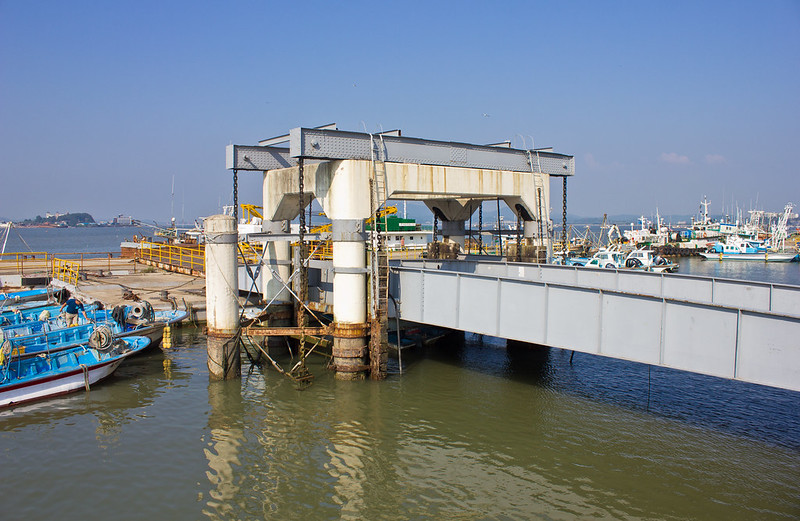









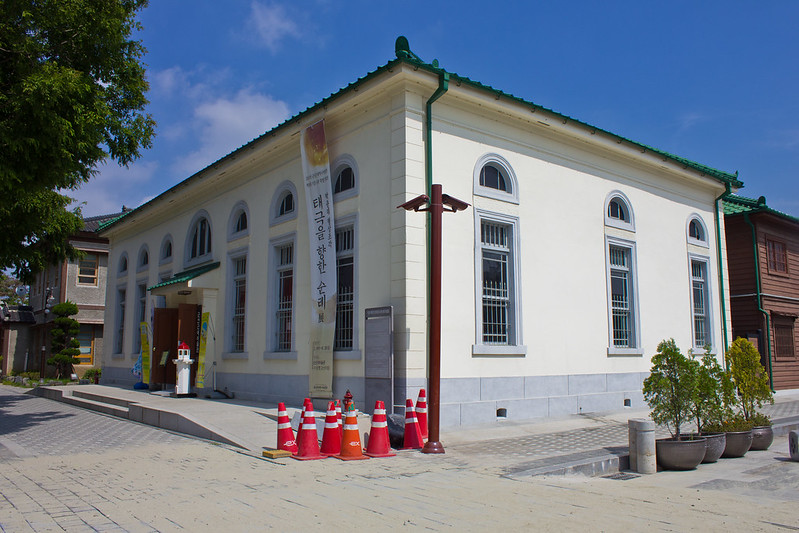
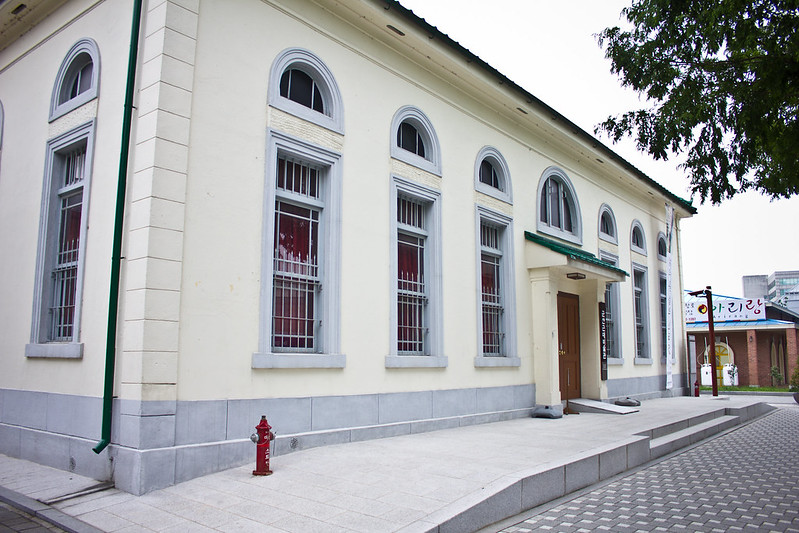

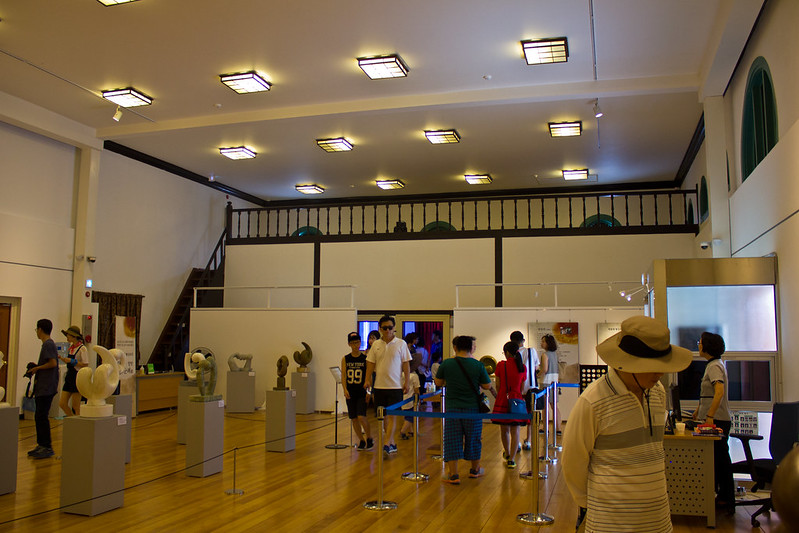
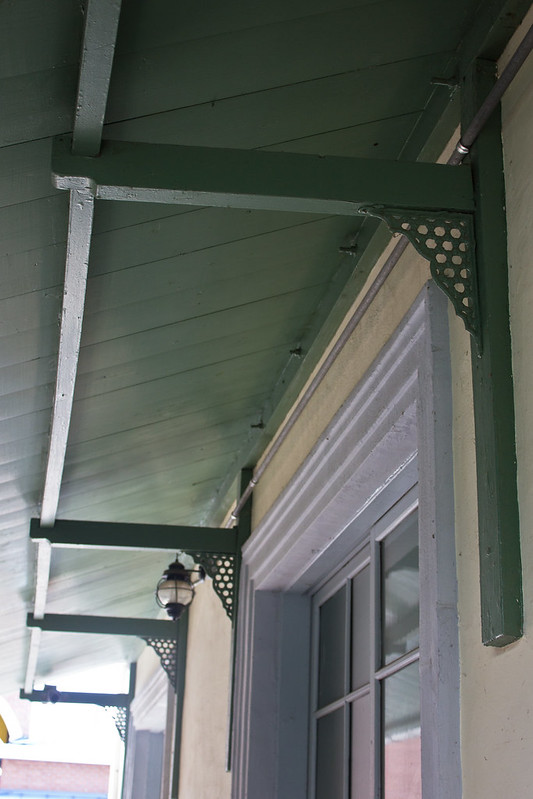



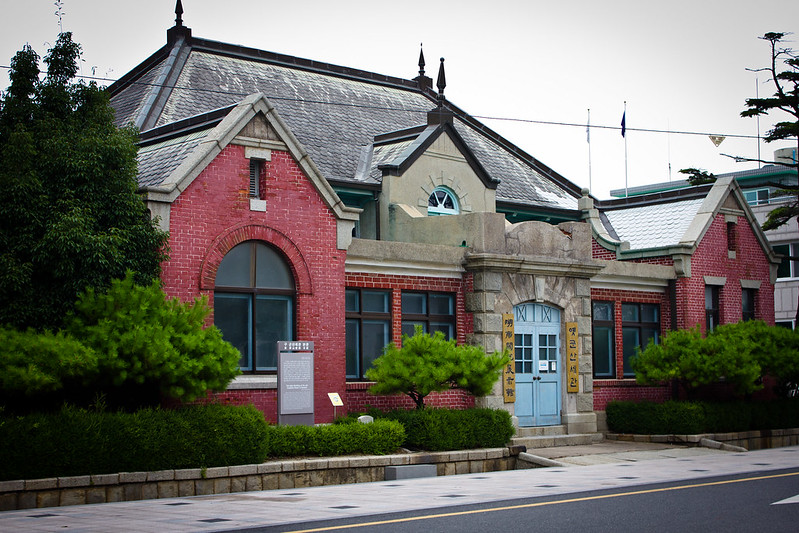
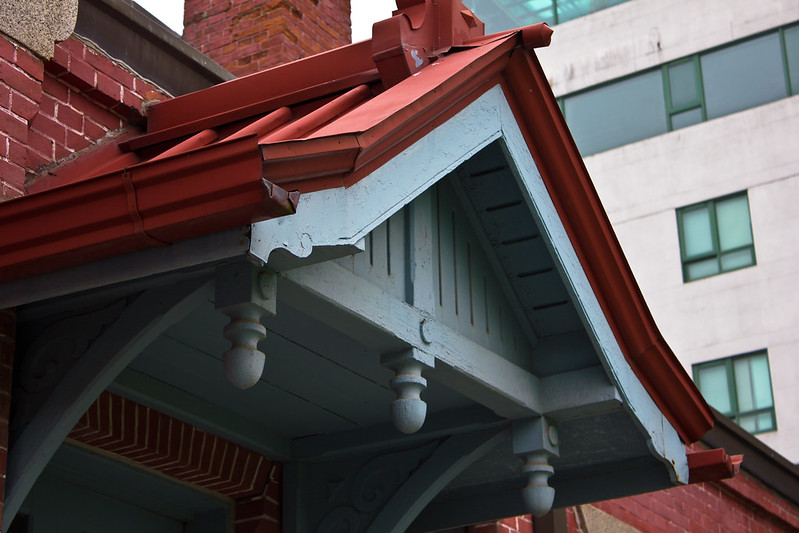

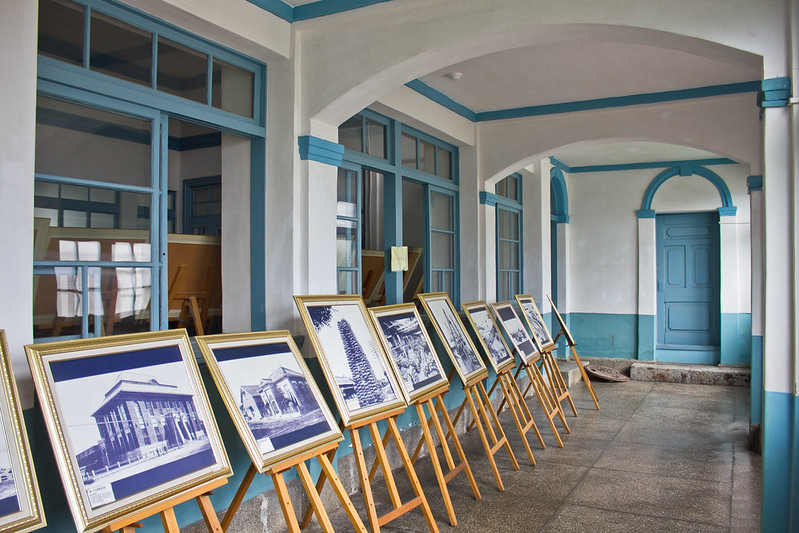
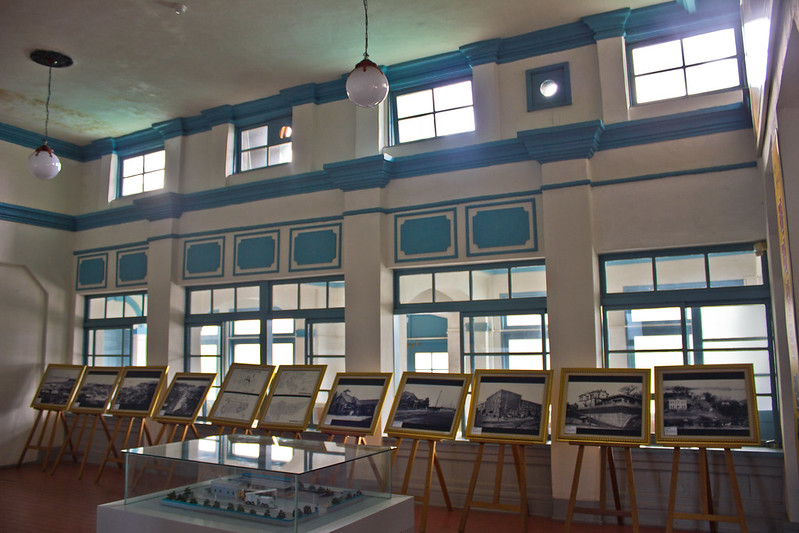


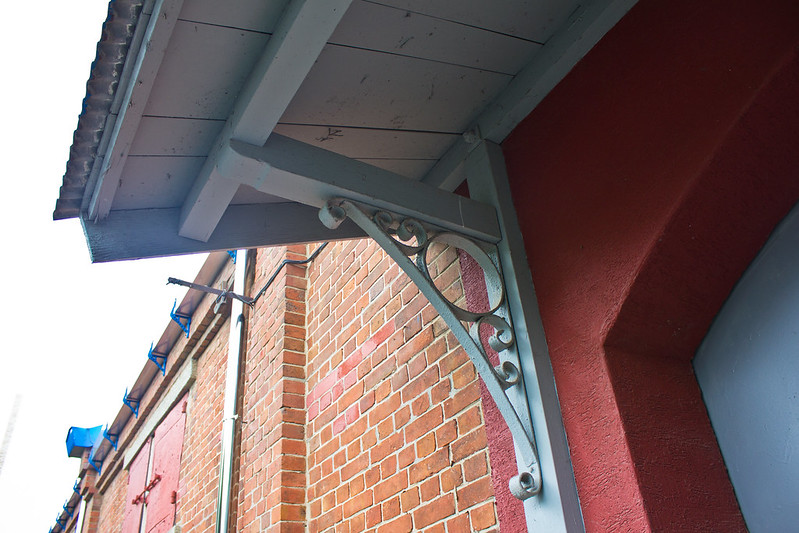










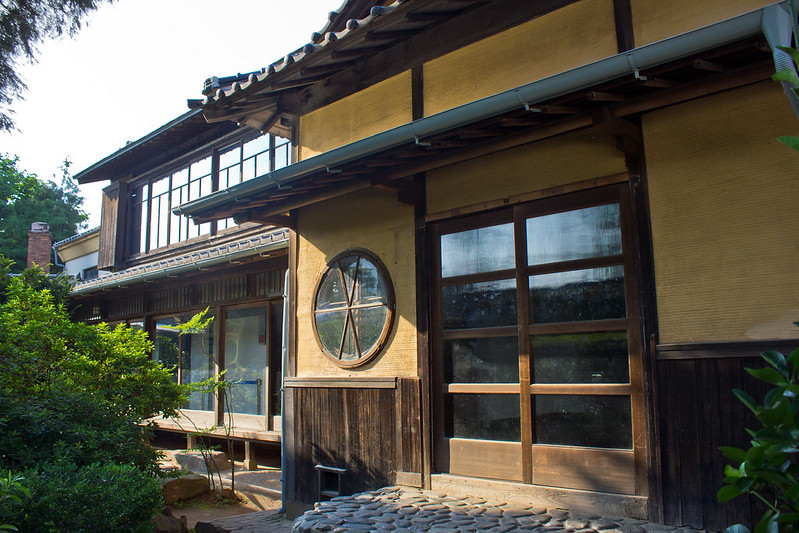


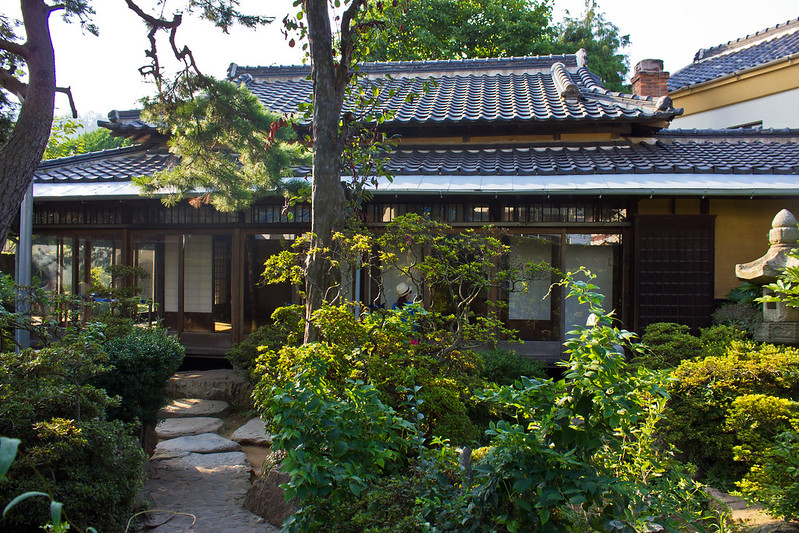


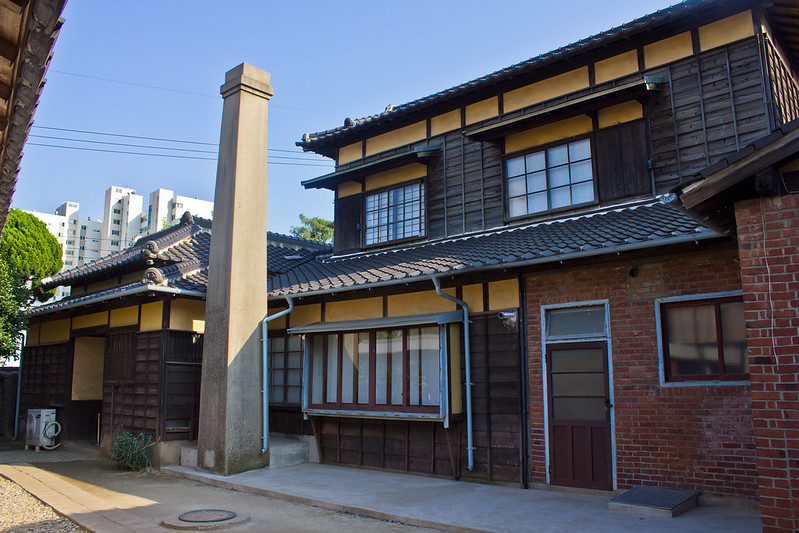
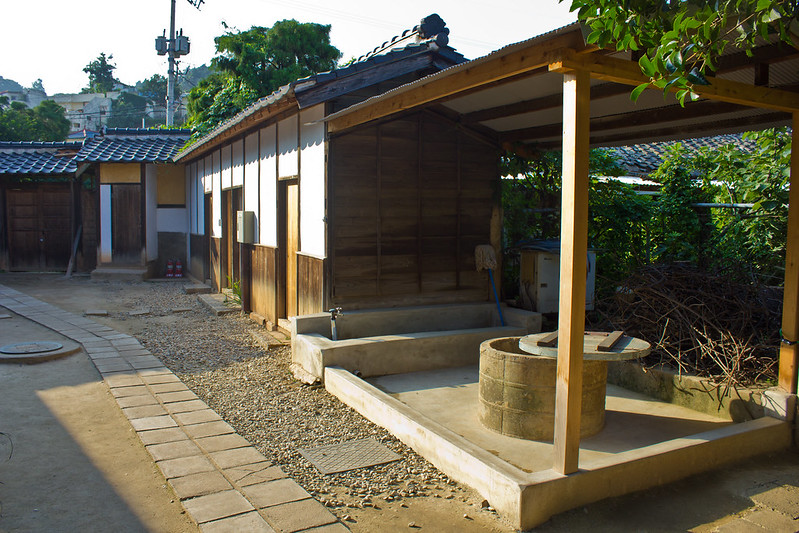
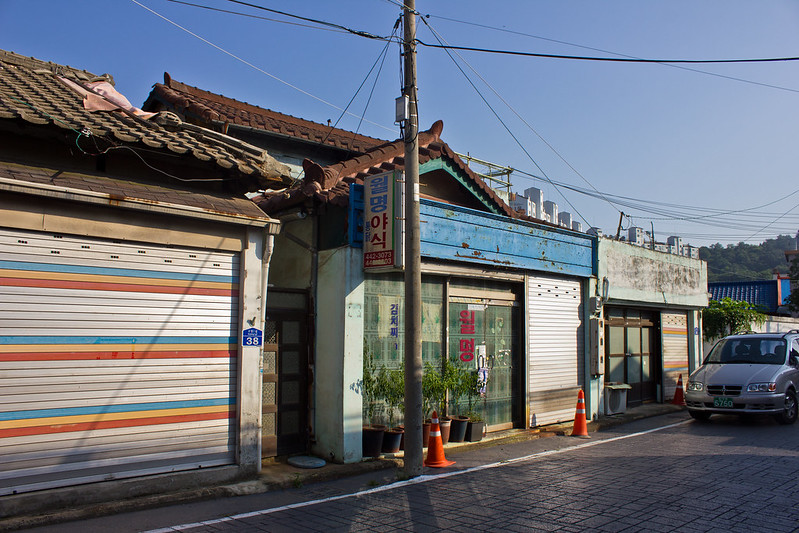




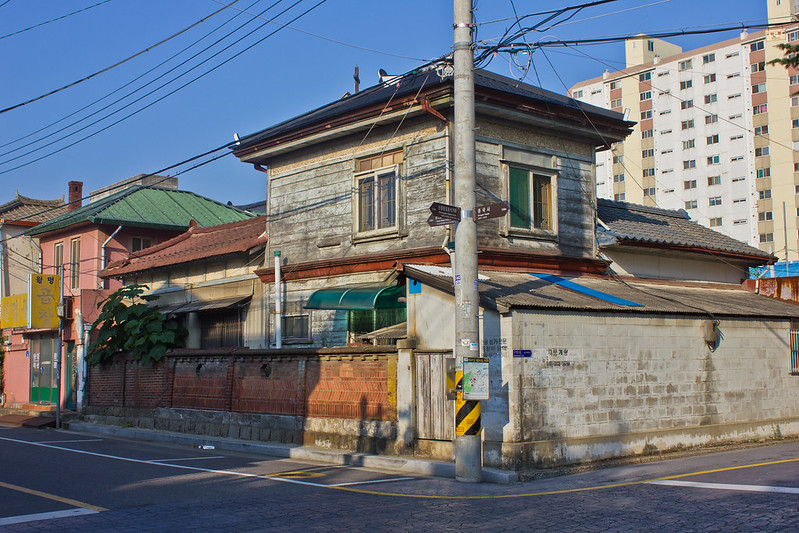


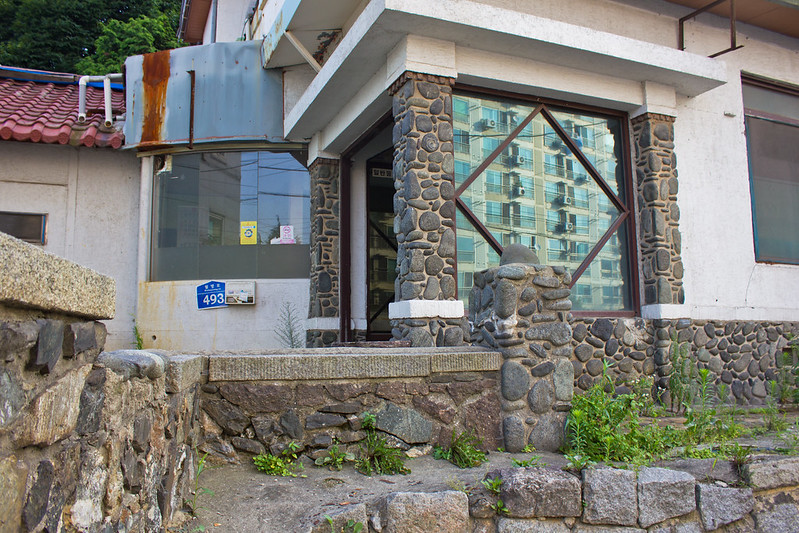
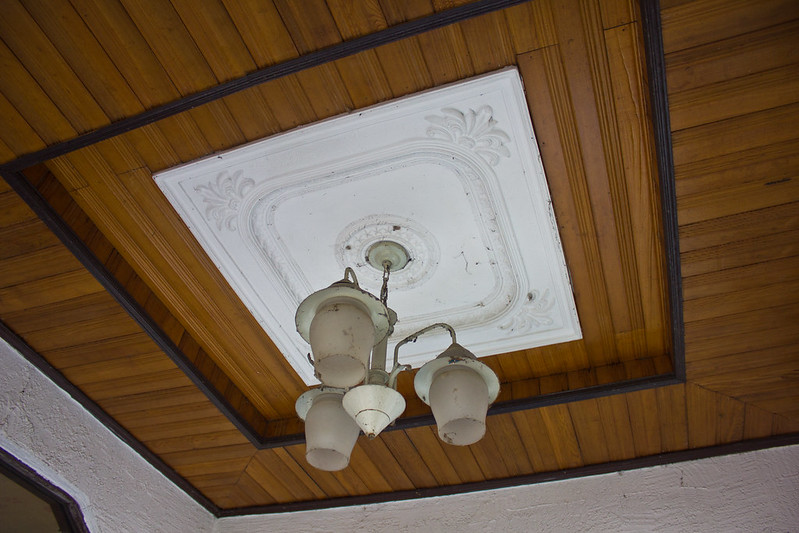

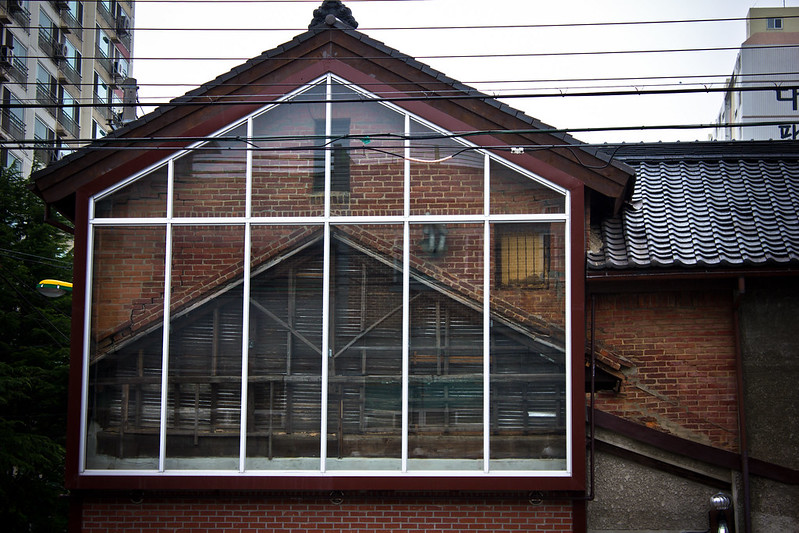


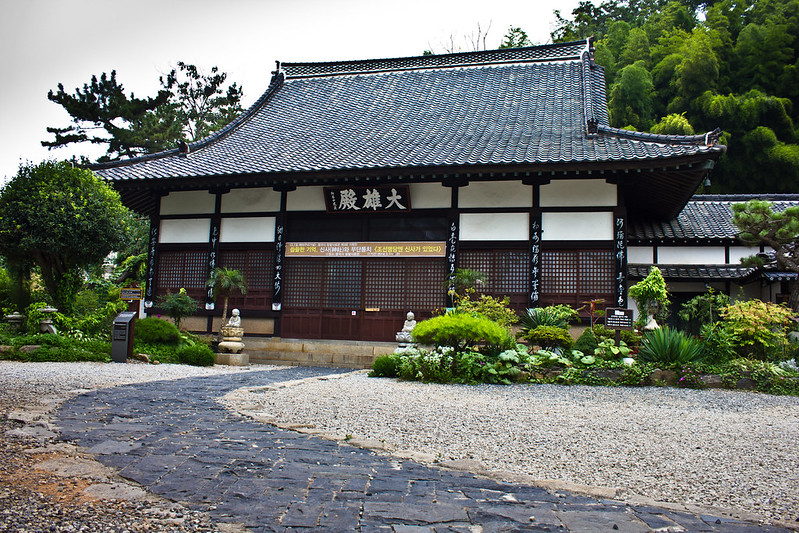



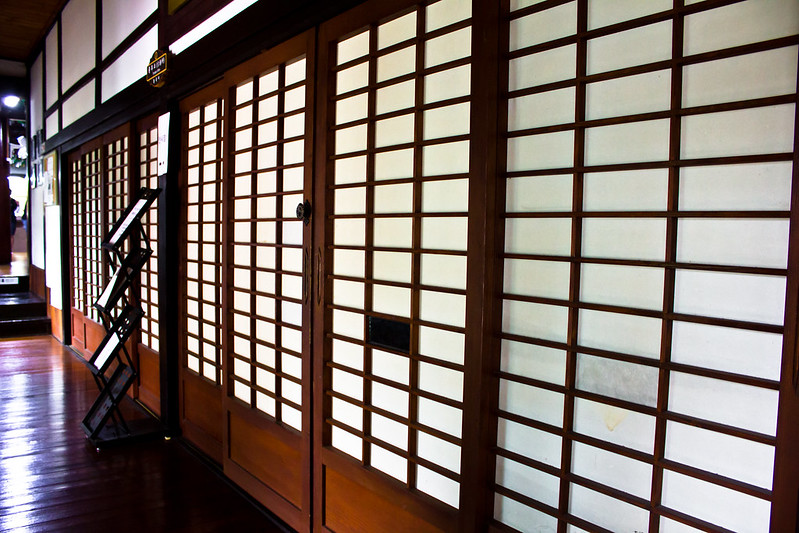


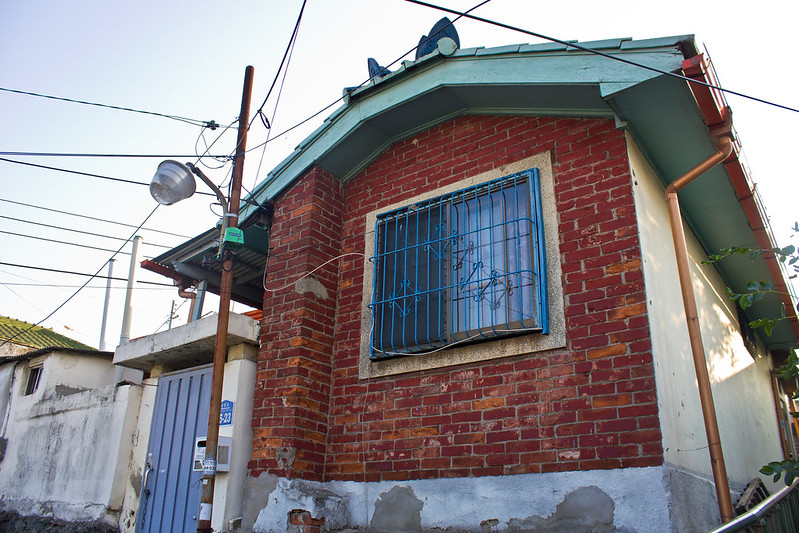
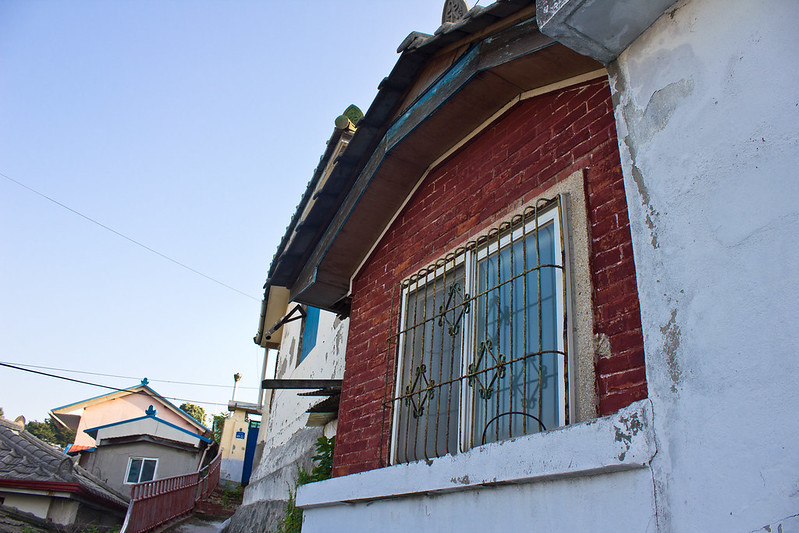


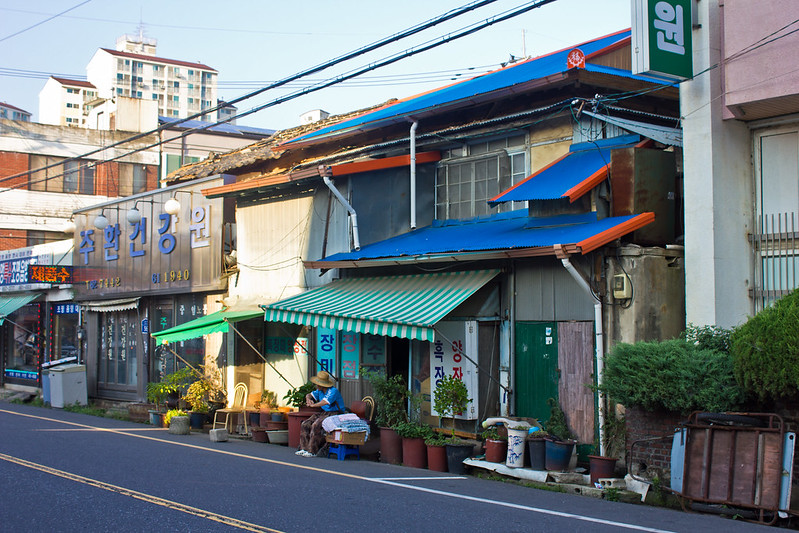






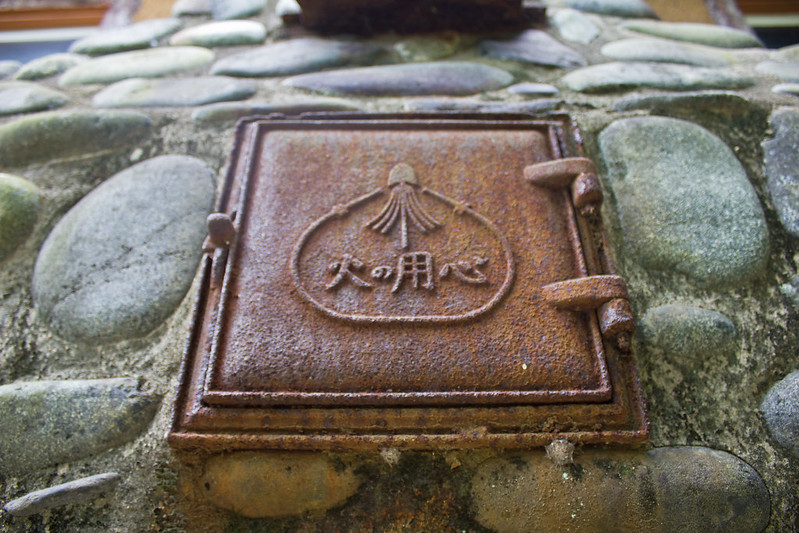



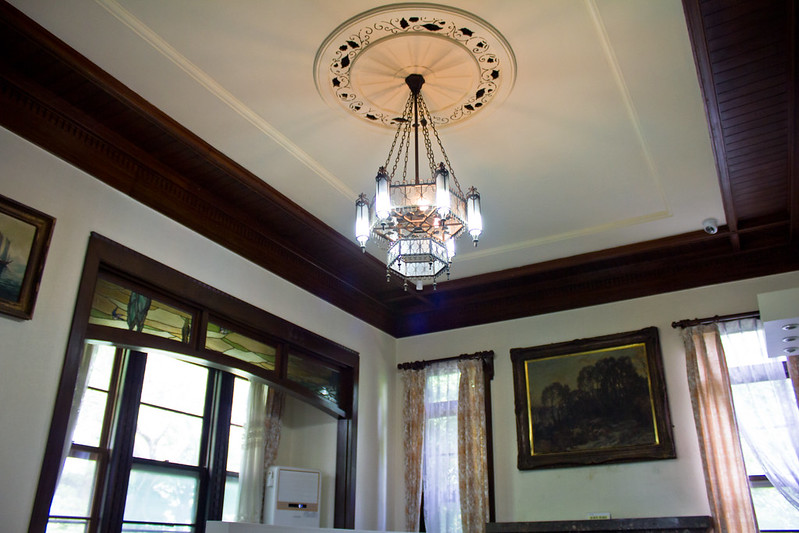



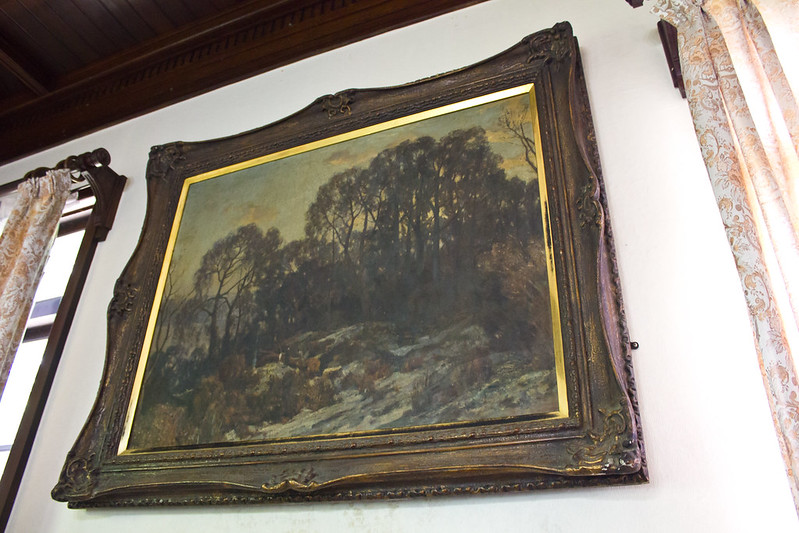



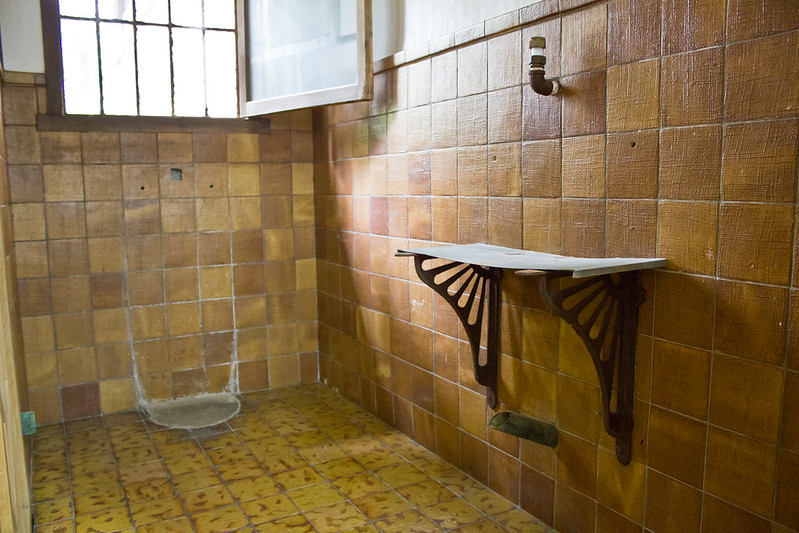

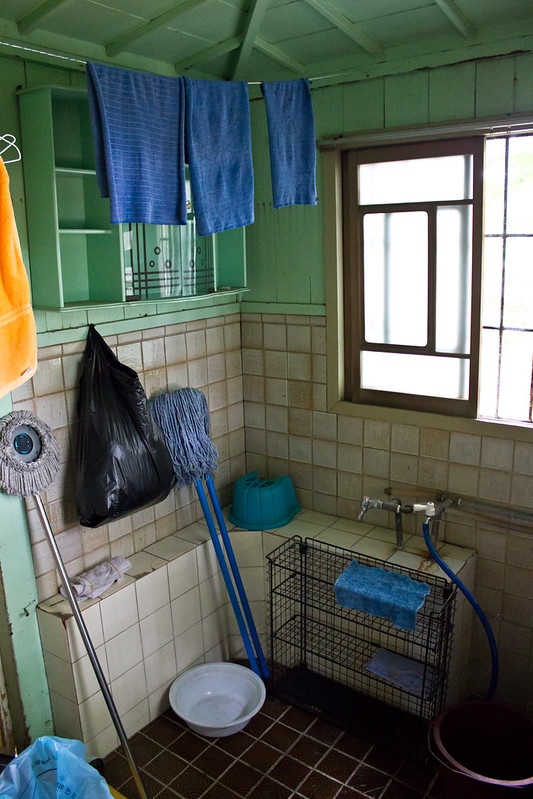
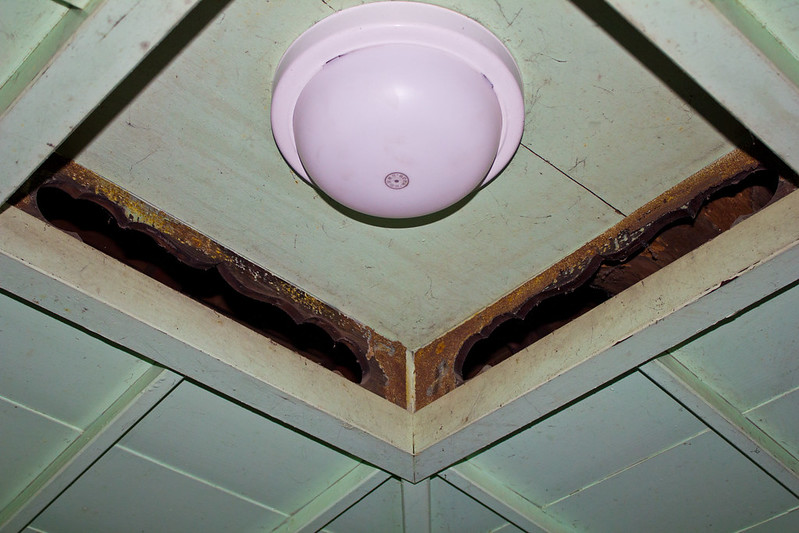
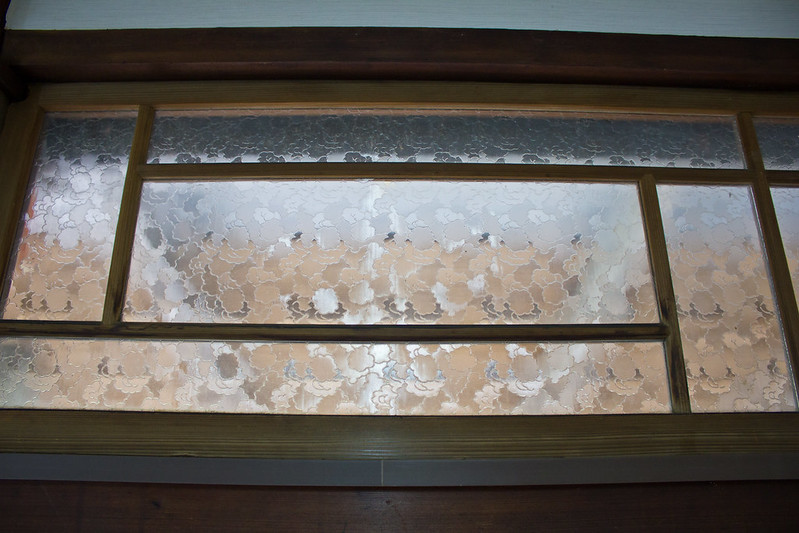
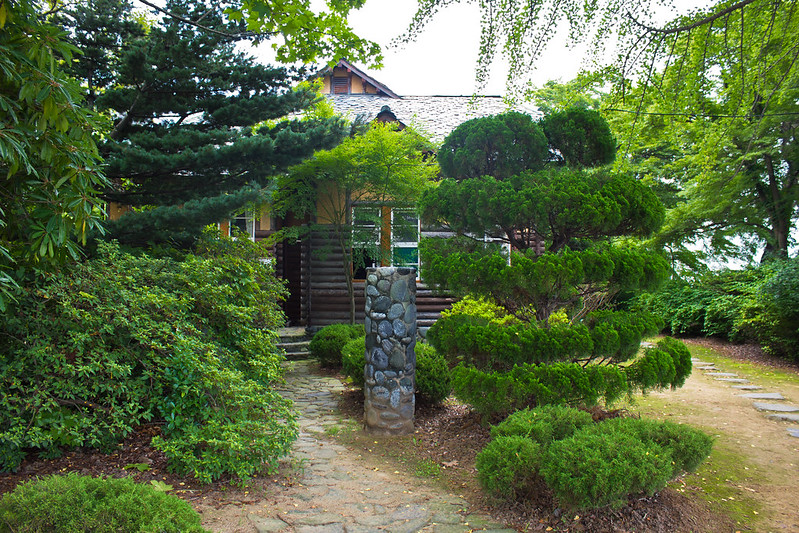

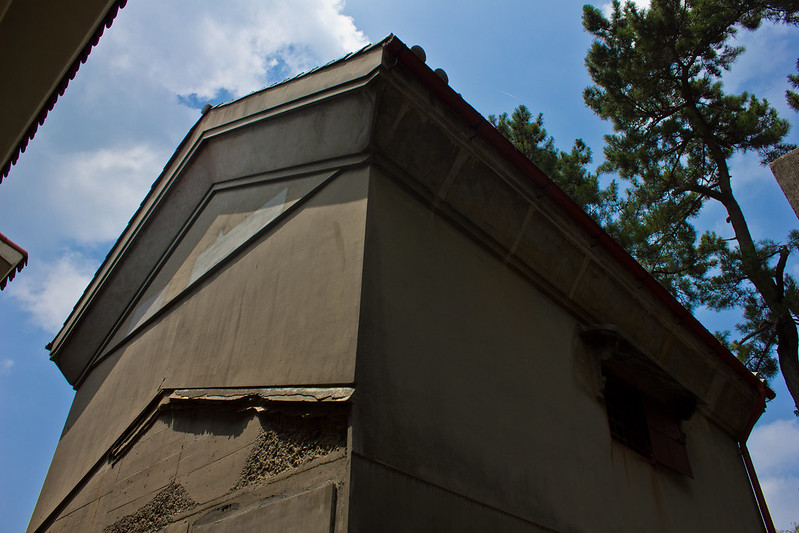

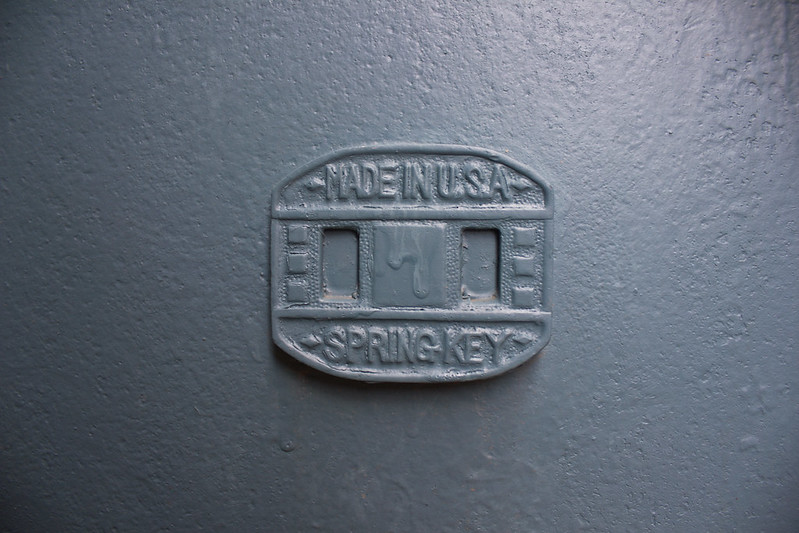
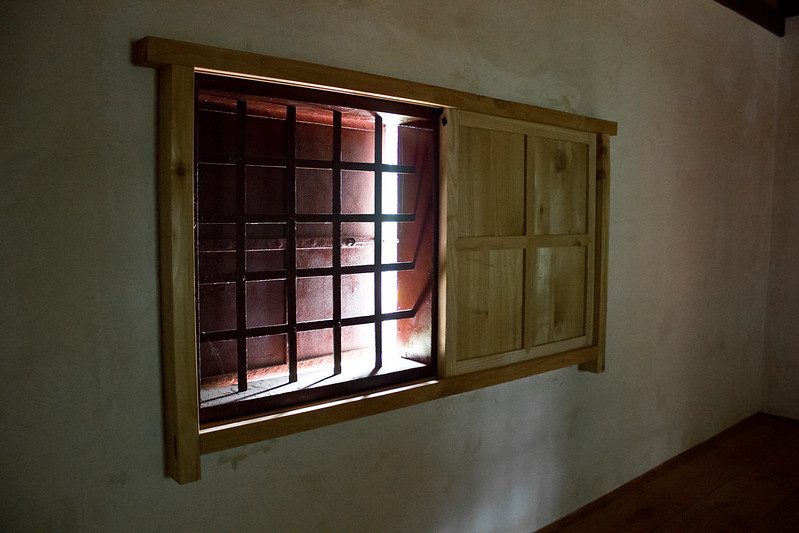

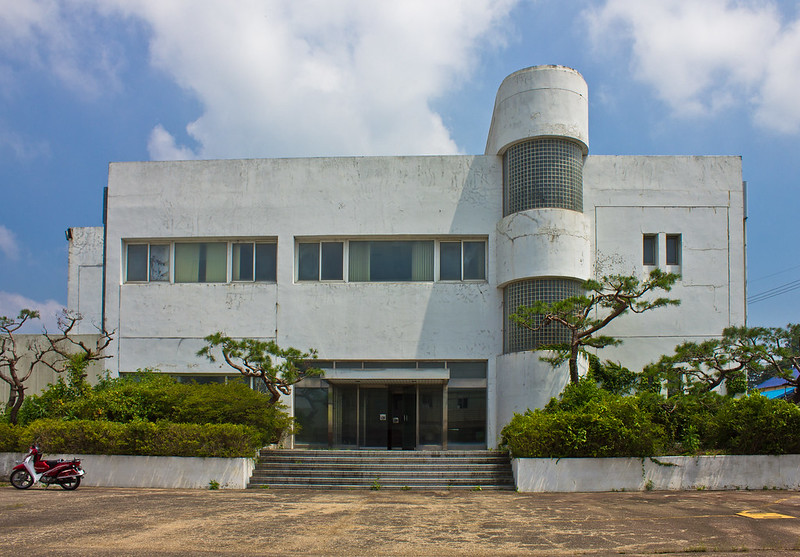
Great read. Can’t wait to visit Gunsan one day!
LikeLike
Hey Nate
A few updates on some of the sites mentioned here:
1. Gunsan Branch Office of the Joseon Food Corporation: Facade has been covered in a yellowish tile; additional band of smooth grey titles now under the roof’s ridge. It appears all of the windows have been re-trimmed.
2. Buyun Gwansa (the Mayor of City Administrator’s House) has been heavily restored. Can share photos if you’re interested for a before and after comparison.
3. Couldn’t go inside, but the exterior of the Sakawa House has been cleaned up with a fresh coat of paint. The original roofing has been removed and red brick has been added to the facade, from the ground to just below the first window of the two-story section. \
Jack
LikeLike
I would love to see photos. I’ll shoot you an email! Thanks.
LikeLike